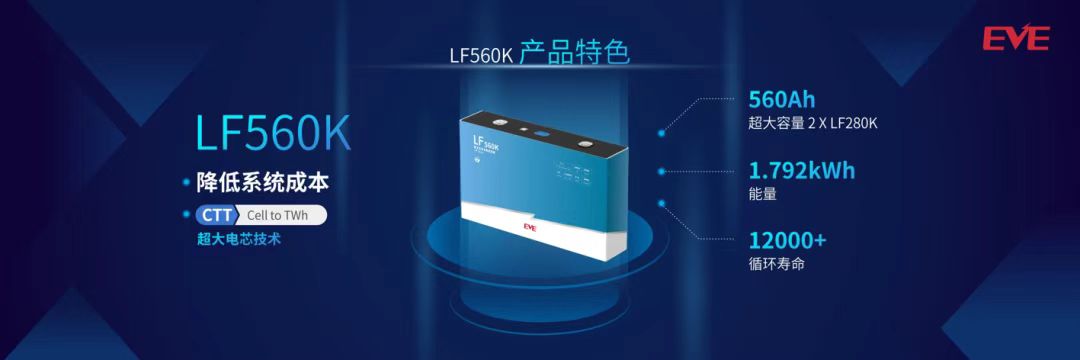
500ah+ LFP Battery Will be the Next Popular Energy Storage Cells?
In October 2022, EVE released the LF560K-560Ah, with a size of 72*352*207mm.
Later, when the corresponding system was released in January 2024, it was corrected to 628Ah, which shows that Yiwei did not expect that the 280Ah battery cell would be blocked by the 314Ah battery so quickly.
Later, Xiongtao Power, Kunyu Power, Narada Power, Rongjie Tianyi and others followed suit and adjusted the size to 72*355*209mm to increase the capacity to 720Ah. However, even so, it is still weak in the face of the next generation of 6MWh, 7MWh, and 8MWh.
Therefore, the evaluation of Yiwei's specification is based on the optimal solution of the current 5MWh-class energy storage system. This optimal solution is relatively friendly to newcomers, but it is indeed unacceptable to battery companies that have already laid out winding production lines.
At the same time, this layout is compatible with 0.25P (4H) and 0.125P (8H) from 0.5P downward
However, the LF560K specification has not achieved disruptive advantages and responses in 5MWh energy storage products, mainly because it uses a stacking process (at this time everyone is doing winding 280Ah), and it is a pure flat replacement. Therefore, after Yiwei 560K, in 2023, all companies basically put their energy into upgrading from the first generation 280Ah to the second generation 314Ah.
It was not until December 2023 that Hithium Energy Storage released the MIC 1130Ah, which is 75*580*208mm in size.
The maximum current of this large battery 0.5P reaches 723A, while the national standard requires a maximum of 2P-2892.8A.
Let me ask: Even if the external connection problem is not considered, can the components of the battery cell itself withstand this current? There is no doubt that it cannot. Fortunately, Haichen’s own positioning also clearly states that this battery cell is used in energy storage scenarios of 0.25P and below, and various companies in the industry have also seen it. Therefore, it is the only one so far, so it is not just a matter of battery cell weight. After such analysis, it is clear that the Haichen MIC1130Ah battery cell provides solutions for energy storage application scenarios of 0.25P and below, and does not have the characteristics of a third-generation energy storage product.
To sum up: the next generation or generations of products in the energy storage market must be redefined to identify real needs rather than blindly pursue breakthroughs in a single performance.
The next generation of products will eventually be reset to a size due to the demand for scale cost reduction and the market's sensitivity to product prices. This size should be compatible with winding and stacking processes. The performance can rely on the technical capabilities of each company to form a well-known, shared, and large-scale product.
For companies that are currently worried about the mass production time of the third-generation products, don't worry. It will bottom out in 2024. The product models have not yet been unified and there will be no rapid iterations in the short term. It is expected that at least tentative products will not enter the market until the first half of 2026, and the actual delivery will not be until early 2027 (the certification time is not short).
However, it is obvious: subsequent energy storage products may share the same battery cell for power storage, industrial and commercial energy storage, and household energy storage. Among them, household energy storage products use large batteries to rely on inverters to achieve electrical power equivalence.
Please refer to Haichen Hero E, focusing on convenience, close to 3C products. Conclusion: The specifications of the next generation of battery products are not important at present, and there is still a long way to go to unify them. The priority now is to reserve a material system with a charge and discharge energy efficiency of 430+Wh/L and 96%+.
